Scrolling means placing enamels of various sizes and colours, opaque or transparent, in lump form, on copper pieces sprinkled with enamel powder, melting the enamels in the kiln and drawing a sharp steel tip at the end of a long handle (protected with a shield from the heat of the kiln) through the molten lumps. This scrolling tool produces interesting swirls (examples shown above). The artisan must remember the layout of the pieces and then work in the kiln from memory.
Silver wire shaped in the form of rings may be carefully fired into a base enamel layer and the spaces inside the rings may be filled with opaque enamels of various colours. Copper wire bent to various shapes may be fired into enamel for wall hangings and additional transparent enamels may further be layered, thus fixing the shiny copper wire in the lower layer enamels. Millefiori glass, which are small disks obtained by cutting a glass rod having an intricate internal structure, may be used to accent even the smallest pieces such as earrings. On the other hand, wall hangings or large dishes may be given an interesting design by placing a dried pressed plant, e.g., vetch, grass, or small flowers, wetted with lavender oil and sprinkled with enamel aside over a sheet of paper. Transferred onto an enamel layer on a dish and fired, the plant material burns and the enamel forms an image which may be accented with opaque enamel lumps.
A silver foil fired onto enamel and then covered with clear enamel and/or lumps of transparent enamel makes very attractive pieces, particularly if the silver foil is first cut in the form of flowers, birds, fish etc. (two examples are shown in the group of four pieces - a spaceship and a windsurfist). Firing the silver foil is very tricky because it is very thin and susceptible to burning. The temperature of the kiln must be well controlled and it must be such that the foil will get attached to the honey-thick enamel and may be burnished with a flat tool to shine. The next firing forms a protective layer of a low-melting transparent enamel.
In a different kind of design it is possible to disperse enamel powders in low-concentration plant gum suspension and paint with these wetted powders on a base enamel as the picture in the right upper corner shows. To make pieces larger than those which could be fired in his kiln, Miloš made images composed of smaller pieces such as the owl in the left upper corner. In the case of minute copper pieces of kittens or seahorses, wet enamels were placed on the copper face and then treated with a vibrator. This treatment joined the various colours. The enamels were dried above the kiln and fired when dry.
When there were no bookends available in retail stores which would be both small and sturdy, Miloš ordered 200 pieces of angle iron from a machine shop and his son Pavel laminated various veneers such as mahogany, walnut, etc. to their faces and painted the rest of the steel with black paint. Miloš then decorated the veneer faces with enameled copper pieces (picture at right in the second paragraph). The best pieces were exhibited publicly in glass cases at the City Hall and a critic assessed them as "flimsy looking bookends" apparently not knowing that they were made from steel (and are fully functional 35 years later). In spite of this negative criticism, this kind of bookends was in great demand and very many pairs were send abroad as Christmas gifts. One summer at a craft market in a large hotel during an international professional meeting, Japanese visitors quickly bought the entire production within an afternoon. Their major question was what was the mass of the bookends: will they add another kilogram to their luggage? No, the mass was only a fraction of a kilogram. Almost a thousand pairs of bookend were sold.
One year, stickpins became very fashionable. Miloš noticed that almost all customers of the OVGEM craft store in Ottawa asked for various kinds of them, so he purchased a gross (144 pieces) and enamelled them all. At the Christmas Craft Sale they sold out in two days, so Miloš bought another gross and enamelled them while Daája was selling alone. Even that gross was sold out in few days, so the third gross was bought, but this time several tens of stickpins were left unsold. At the end of the craft sale a fellow artisan asked Miloš whether he had any stickpins for sale. She made 36 pieces and sold them all. She did not like to hear his story about 3 grosses of stickpins...
The copper pieces which are removed from the kiln and cooled may not appear appealing because their edges are dark from oxidation scales. They need to be filed and polished. Dája prepared them for the market presentation. - The couple's booth (left image in the second row and the last image at the end) utilized every square decimeter (or inch) of the space rented from the market organizers. When this hobby was well mastered, it even appeared to be profitable.
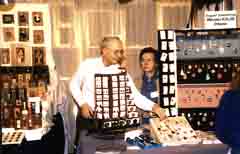 What would Miloš and Dája say today, 30 years later? "It was a creative hobby and we wish to thank all our customers, particularly those "faithful" who would come every Christmas curious to make their gift selections from our new production. By buying, they provided us with money and emptied space in our workshop so we could continue endulging in this beautiful activity. We hope that our pieces brought the joy which we put into making them. We enjoyed serving our customers every Christmas season and we liked talking to them and chatting with other fellow craftspeople".
What would Miloš and Dája say today, 30 years later? "It was a creative hobby and we wish to thank all our customers, particularly those "faithful" who would come every Christmas curious to make their gift selections from our new production. By buying, they provided us with money and emptied space in our workshop so we could continue endulging in this beautiful activity. We hope that our pieces brought the joy which we put into making them. We enjoyed serving our customers every Christmas season and we liked talking to them and chatting with other fellow craftspeople".
Note: The edges of enameled copper pieces may be cleaned with fine steel wool - it will not damage the enamel. However, the enamel may crack if the piece falls on a stone floor or if a hard object hits it. The enameled surfaces may be washed with diluted household detergent and dried with a paper or cloth towel.
©SCIMAT 2008-2012
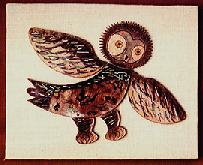
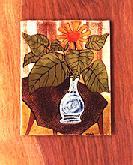
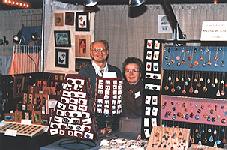
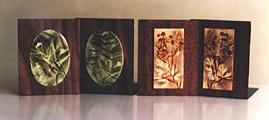
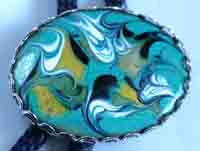
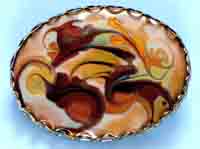
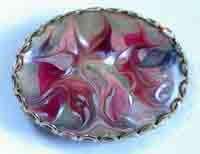
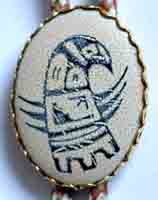
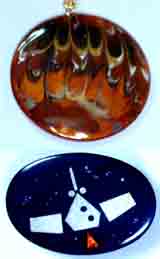
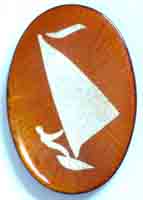
 What would Miloš and Dája say today, 30 years later? "It was a creative hobby and we wish to thank all our customers, particularly those "faithful" who would come every Christmas curious to make their gift selections from our new production. By buying, they provided us with money and emptied space in our workshop so we could continue endulging in this beautiful activity. We hope that our pieces brought the joy which we put into making them. We enjoyed serving our customers every Christmas season and we liked talking to them and chatting with other fellow craftspeople".
What would Miloš and Dája say today, 30 years later? "It was a creative hobby and we wish to thank all our customers, particularly those "faithful" who would come every Christmas curious to make their gift selections from our new production. By buying, they provided us with money and emptied space in our workshop so we could continue endulging in this beautiful activity. We hope that our pieces brought the joy which we put into making them. We enjoyed serving our customers every Christmas season and we liked talking to them and chatting with other fellow craftspeople".